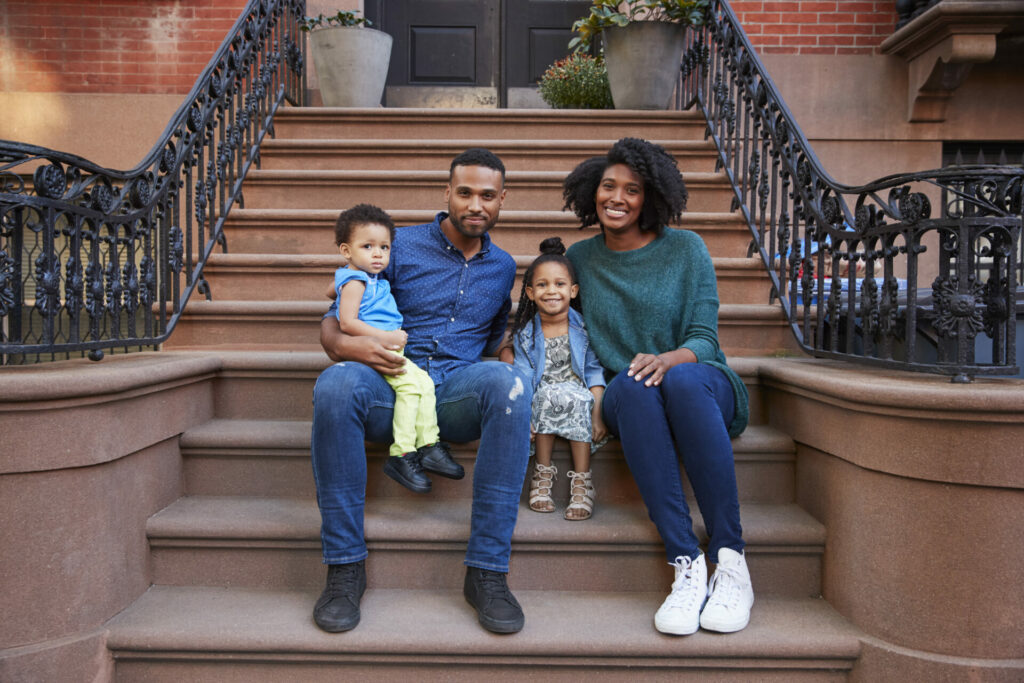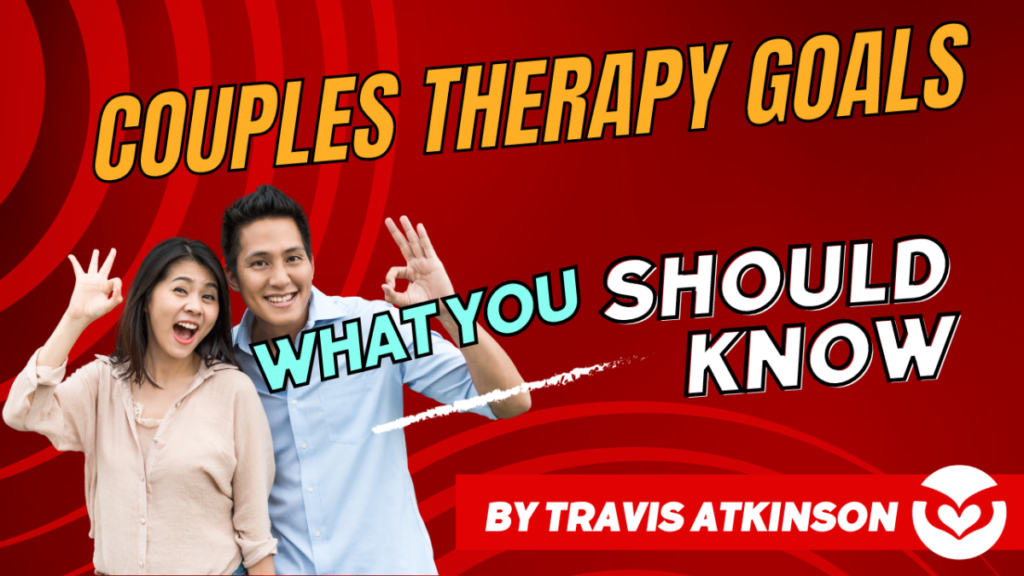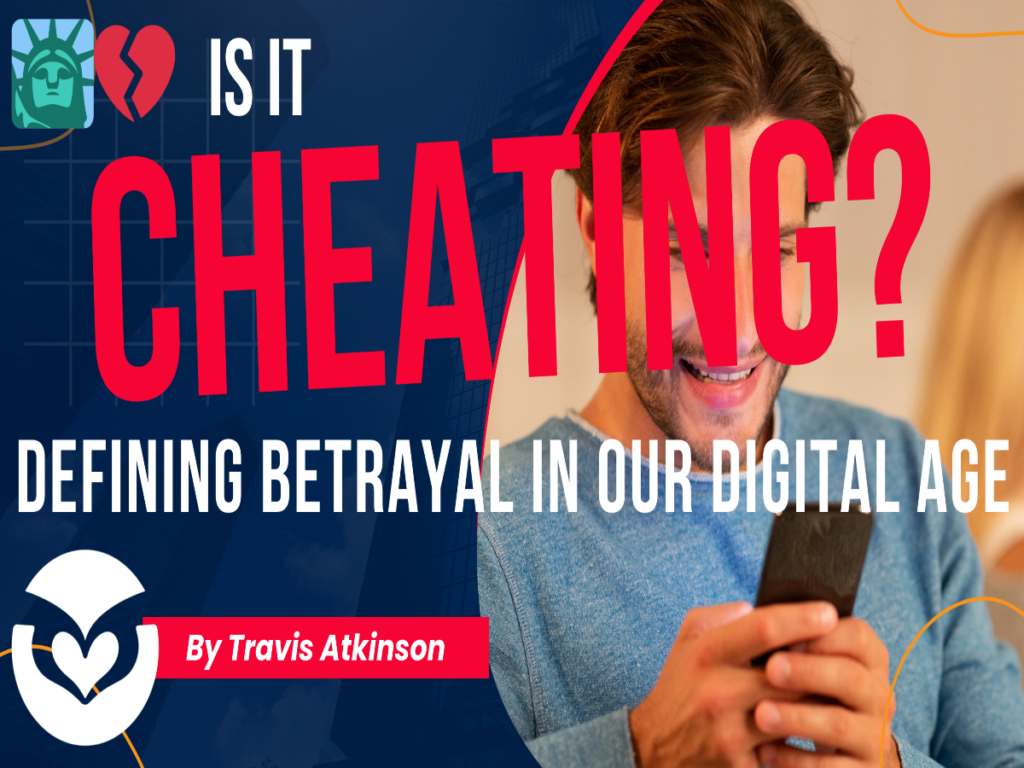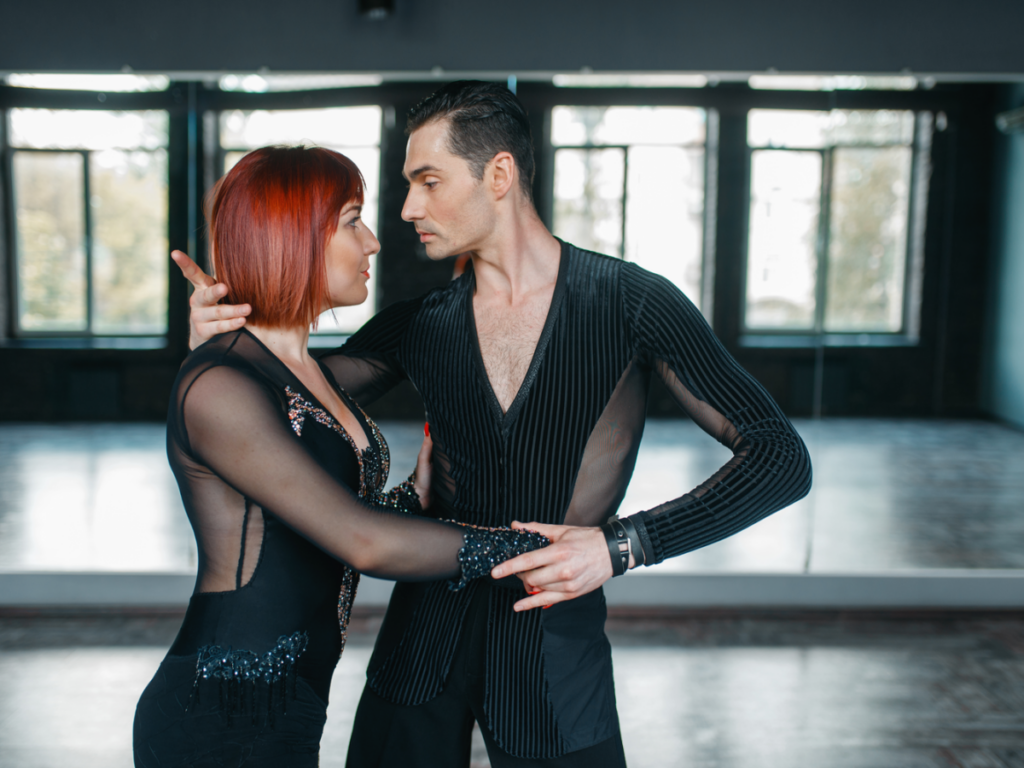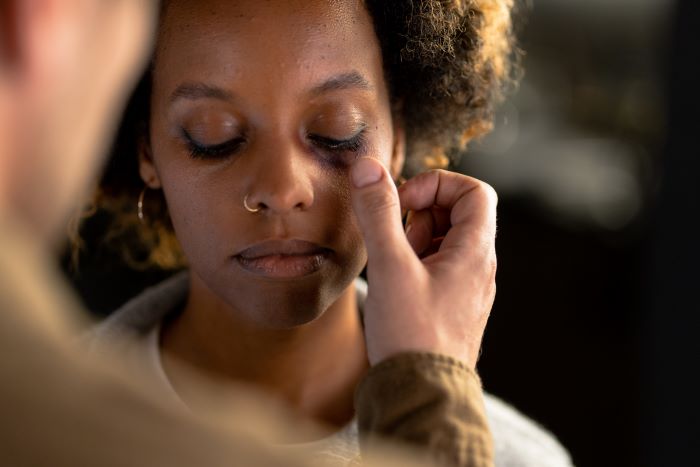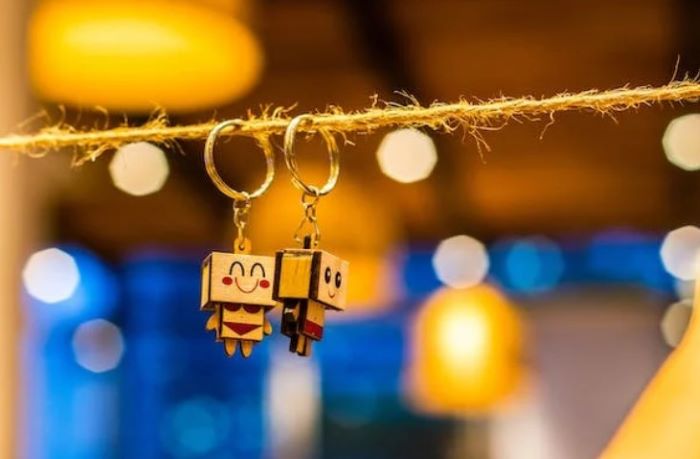Every Sunday morning in Brooklyn Heights, Sarah watches her partner Alex disappear into his home studio the moment she suggests they plan their week together. What starts as a simple conversation about dinner reservations spirals into Alex grabbing his coffee and muttering about needing to “work on some tracks.” The studio door clicks shut. Sarah stands alone in their sun-drenched kitchen, feeling like she’s been talking to a ghost.

Sound familiar? If you’re nodding along while sipping your third cortado of the day, you might be witnessing—or embodying—one of the most relationship-destroying patterns in modern love: the distancer dynamic.
What may seem like harmless withdrawal isn’t protecting your relationship. Research shows it’s actually one of the most destructive forces in intimate relationships, silently eroding trust, breeding resentment, and dramatically increasing your chances of ending up as another Manhattan divorce statistic.
Key Highlights of Relationship Distancers
- A “distancer” in relationships withdraws emotionally or shuts down, increasing the risk of breakups and unhappiness.
- Many distancers think withdrawal keeps the peace, but Gottman Institute research shows it destroys trust and intimacy.
- Integrative couples therapy in NYC—using the Gottman Method, EFT, Schema Therapy, and the Loving at Your Best Plan—breaks the distancer-pursuer cycle for real, lasting connection.
- Healing starts with understanding avoidant attachment, childhood wounds, and learning new communication skills tailored for New York couples.
- Even entrenched distancing patterns can be changed; real-life NYC couples find stronger bonds with expert therapy.

But there’s real hope. Transforming even the most stubborn distancing patterns is possible. With the right support, couples therapy that blends the Gottman Method, Emotionally Focused Therapy (EFT), Schema Therapy, and the innovative Loving at Your Best Plan can help partners rebuild true closeness and trust, even if it’s felt out of reach for years.
Curious how this works in real life? Let’s take the first step together.
What Defines a Distancer in Relationships? Why Does It Hurt So Much?
You reach out. You share your worries, or your hopes, or ask for a little more closeness.
But, instead of drawing near—or even meeting you halfway—your partner pulls back. They need space. Alone time. Silence. Maybe they say they’re busy, or maybe you hear only the quiet echo of your own words in the room.
It doesn’t always start as a big deal.
At first, it might even feel reasonable: everyone needs downtime, right?
But, after each encounter, you’re left with a growing ache you can’t quite name.
Here’s what’s really going on:
A distancer in relationships is someone who, when faced with emotional stress or conflict, instinctively seeks autonomy—not connection. It’s not running from a bear; it’s running from feelings. For them, personal space, emotional independence, and self-sufficiency matter more than shared experiences or open conversations.
When you reach out—whether it’s a simple request or a need for reassurance—their reaction is to close off.
Maybe they say they need to “think,” or maybe you just get a wall of silence or cool indifference.
You might see them withdraw, shut down, or become completely emotionally unavailable.
BUT, what feels subtle at first—those moments when your partner disappears emotionally—THEREFORE grows into a heavy, private loneliness.
Over time, this pattern of emotional withdrawal is anything but harmless.
You find yourself craving connection more than ever, only to feel more isolated each time you try.
This isn’t just you.
It’s a real relationship dynamic. It hurts.
And it’s exactly why understanding the distancer’s pattern—and what you can do about it—is the first step toward something better.

If you’re with a distancer in relationships, these patterns tend to show up again and again:
- Processing emotions internally: Your partner keeps their feelings to themselves. When you check in, you may get a quiet “I’m fine” or nothing at all, which leaves you guessing what’s really happening.
- Valuing autonomy: No matter how close you get, independence remains a top priority. Even in a committed relationship, your partner chooses self-reliance over leaning in together.
- Withdrawing during conflicts: Tension rises, and suddenly your partner shuts down, becomes quiet, or leaves the room. Arguments fade into silence, and issues go unresolved.
- Needing extensive alone time: Even after a full day apart, they still crave more time alone to reset. Social plans, even with you, can drain their energy.
- Struggling with vulnerability: Conversations that get deep or emotionally charged end quickly. Your partner rarely opens up about deeper hopes or hurts, making true closeness feel out of reach.
For example, Marcus, a hedge fund analyst in SoHo, rarely talks through relationship plans. When his boyfriend David brings up their anniversary, Marcus is already reaching for his phone, saying he has to check on work emails. Eventually, discussions like these just fade away, and “maybe later” never gets scheduled.
These patterns don’t always stand out at first. Over time, though, they can become the silent force driving emotional distance and loneliness, even in the most promising partnerships. Recognizing these core characteristics is an important step toward rebuilding real connection.
Healthy Space-Taking vs. Problematic Withdrawal
It’s easy to confuse healthy space with emotional withdrawal. In relationships, space itself isn’t the problem—but how you and your partner handle it makes all the difference.
When space-taking is healthy, it’s discussed openly. You or your partner might say, “I need a little time alone to recharge, but let’s reconnect soon.” Both people know when and how they’ll come back together. There’s respect for individual needs, and a clear understanding that distance is temporary and safe for the relationship.
But problematic withdrawal works differently. This isn’t about recharging; it’s a knee-jerk reaction to discomfort, stress, or conflict, often driven by a need for self-protection. Your partner disappears behind closed doors, ignores messages, or pours themselves into work or endless distractions. There’s no reassurance or plan to reconnect—just silence and uncertainty.
The real difference?
Healthy space is a pause—an intentional step back that leads to renewed connection. Problematic distancing is a pattern that creates more distance, leaving you feeling isolated and never sure when, or if, your partner will return emotionally.
Learning to spot this distinction can help you advocate for the closeness and clarity you deserve, rather than getting stuck in cycles of loneliness and doubt.

The Psychology Behind Distancing Behaviors: Gottman Method Couples Therapy NYC Insights
Ever wonder why your partner pulls away just when you need them most? Understanding a distancer’s patterns means looking beneath the surface—at the psychology of attachment. Think of it like your relationship’s operating system: quietly installed in childhood, running in the background, driving how you both relate as adults.
Attachment Theory and the Distancer Personality
Much of what you’re experiencing traces back to avoidant attachment. Most distancers developed this style early on, in homes where emotional needs weren’t met, comfort was rare, or feelings were minimized—or even punished. Imagine a child who learns that showing sadness means getting scolded, not soothed. Over time, “I can only rely on myself” becomes their main belief.
It’s not just habit. Research shows that adults with avoidant attachment have lower activation in the brain’s empathy centers during emotional moments. It’s not that your partner doesn’t care. Their nervous system tries to shield them by muting feelings—sometimes even to their own surprise.
Jennifer, who grew up on the Upper East Side, recalls, “I spent my childhood walking on eggshells around my mother’s moods. Disappearing was what kept me safe—and now, it’s how I handle every relationship.” If you recognize this pattern in your partner, you’re not alone.
Understanding why distancers distance requires diving into the psychology of attachment—think of it as your relationship’s operating system, programmed in childhood and running largely in the background of your adult relationships.
Fear of Engulfment: Losing Yourself (and Each Other) in the Traps of Distance
If you’re with a distancer in relationships, you may notice a clear pattern—whenever emotional closeness increases, your partner seems to pull away. It’s not random. For many, emotional intimacy triggers a powerful fear of engulfment, where being truly close feels like losing their identity or freedom. They might worry about being consumed, controlled, or overwhelmed by your needs, even if you’re only seeking basic connection.
This fear of engulfment often starts long before your relationship. For a distancer, childhood could have meant blurred boundaries, emotionally intrusive parents, or situations where saying “no” wasn’t respected. Over time, the only way to protect themselves was to build walls—to carve out autonomy at any price.
However, the more a distancer acts to preserve their sense of self—pulling back, shutting down, or insisting on space—the more partners like you may reach for closeness, clarity, and reassurance. This cycle can create exactly the dynamic your partner fears most: a relationship where one person pursues while the other escapes, leaving you both more frustrated and alone.
Self-Protection and Emotional Regulation: Why Withdrawal Feels Safer
When relationship stress rises, distancers often fall back on withdrawal as an emotional regulation strategy. It’s not because they don’t care; it’s because intense feelings (yours or theirs) can quickly lead to what John Gottman calls “flooding”—an overwhelming rush of emotion that feels impossible to manage in the moment.
To survive that stress, distancers turn to self-protective habits, including:
- Downplaying emotional conversations: “It’s not such a big deal,” or “let’s just move on.”
- Focusing on logic, not feelings: You get facts and solutions, but not true emotional presence.
- Escaping into work, exercise, or solo hobbies: Staying busy keeps tough conversations at bay.
- Numbing out: Substances, screens, or routines become shields against discomfort and deeper connection.
BUT, these coping mechanisms might feel safe for your partner—THEREFORE, they often increase your sense of distance, confusion, and longing for real intimacy. The cycle repeats, leaving each of you feeling more alone, even together.
Knowing this is the reality behind many distancers’ actions can reshape how you respond and where you turn for help—paving the way for new strategies that break the cycle and restore meaningful connection.

How Distancing Affects Romantic Relationships: The NYC Reality Check
You already know therapy in New York can cost as much as your rent. Therefore, understanding how emotional withdrawal actually impacts your relationship isn’t optional; it’s crucial. The research is harsh but honest: couples stuck in the distancer pattern face more than a 90% chance of breaking up within five years. It sounds shocking, but in NYC, where life never pauses, silence in love is louder than a 4 a.m. garbage truck.
The Pursuer-Distancer Dynamic: Your Own Manhattan Story
Maybe this is all too familiar. You try to reach your partner—ask about dinner, plans, or just their day—but you’re answered with a shrug or a distracted “later.” You end up talking to yourself at the counter, coffee growing cold.
Therefore, you start pursuing harder: more texts, more questions, more hope that this time, they’ll open up. However, your partner pulls away even more. Suddenly, there are longer work hours, solo nights at the gym, or “urgent” startup projects that never end. It’s the classic NYC chase—not for taxis, but for connection. The more you push, the further they run. Meanwhile, the gap grows wide enough for a subway line to pass through.
This isn’t just a hiccup. This pursuer-distancer dance quickly spirals. It’s exhausting for both of you, robbing your relationship of the trust, spontaneity, and closeness you miss so much.
The Hidden Costs of Emotional Distance
You might think that avoiding arguments or giving extra space might keep things peaceful. But, ironically, it does the opposite. Emotional distance quietly chips away at everything that makes love feel worth it.
Here’s what happens when emotional withdrawal sets in:
- Communication breaks down. Issues that matter never get fixed. Conversations start and stall, with real worries swept under the rug.
- Intimacy erodes. You feel less seen, less chosen, and more like roommates than partners.
- Resentment builds. You start thinking, “Do I even matter anymore?” Meanwhile, your partner feels judged or pressured whenever you try to get close.
- Trust fades. The message—however unintended—is clear: this relationship isn’t worth staying present for.
David, a surgeon from Greenwich Village, puts it this way: “I thought I was avoiding pointless fights. I didn’t realize my wife felt utterly alone—until the day she told me living together felt like living with a stranger.”
Why the Gottman Method Matters: Couples Therapy NYC and the “Four Horsemen”
Dr. John Gottman’s research, central to Gottman Method Couples Therapy NYC, identified four relationship killers known as the Four Horsemen: criticism, contempt, defensiveness, and stonewalling. Stonewalling—the classic distancer behavior—can be especially toxic for couples. When one partner shuts down or withdraws during conflict, it signals to the other that their concerns don’t matter.
The physiological reality is that distancers often stonewall when they’re flooded with emotion. Even though it may look like indifference or rejection, this is usually their way of coping with overwhelming feelings. This distortion creates a dangerous misunderstanding: the partner on the receiving end feels shut out and alone. That misunderstanding then fuels the familiar pursuer-distancer cycle, which develops into what Gottman calls a “negative sentiment override,” where both partners start assuming the worst about each other’s intentions.
Recognizing these patterns, especially emotional withdrawal and stonewalling, is essential. Gottman Method Couples Therapy NYC helps couples break this destructive cycle and move back toward understanding, trust, and connection.

Breaking Free: Integrative Approaches in NYC Couples Therapy
Feeling trapped in the distancer dynamic? In New York City, you’re not alone—but you don’t have to stay stuck. Breaking free is truly possible—even with patterns that seem deeply entrenched. Today’s most effective couples therapists in NYC champion integrative approaches that go beyond talk, tackling distancing on every level: emotional, behavioral, and cognitive.
The Loving at Your Best Plan: NYC’s Revolutionary Integration
You want change that lasts. That’s why the Loving at Your Best Plan, created in the heart of NYC by Travis Atkinson, is so powerful. This approach fuses proven methods, letting you rewrite old stories and reconnect—for real.
- Gottman Method Couples Therapy NYC: Fixes broken communication, rebuilds positive daily habits, and addresses emotional withdrawal with research-backed interventions.
- Emotionally Focused Therapy (EFT): Helps distancers access, name, and safely express the emotions they’ve long kept hidden.
- Schema Therapy: Uncovers and heals core wounds from the past that keep the distancer stuck in old, self-protective cycles.
- Mindfulness-Based Interventions: Empowers both partners to stay present, handle stress, and respond flexibly—even during tense moments.
This isn’t just communication coaching. Integrative couples therapy in NYC recognizes that distancing is linked to deeper attachment wounds, emotional regulation hurdles, and learned coping strategies that don’t work anymore.
Gottman Method Interventions for Distancers
Here’s what real change looks like with the Gottman Method:
- Turning Toward Exercises: Instead of ignoring your partner’s emotional signals, you learn to spot and respond to them with warmth. No more missed bids for connection.
- Softened Start-Up: Difficult conversations become less of a minefield. You both practice replacing blame with vulnerability—“I feel disconnected and would love some time together”—lowering defenses instantly.
- Physiological Self-Soothing: If emotions run high and you feel flooded, you take a break the right way—pausing to breathe instead of abandoning the discussion, so the connection stays safe.
Emotionally Focused Therapy (EFT): Going Below the Surface
Sometimes, what looks like coldness is really fear. EFT in NYC couples therapy helps distancers realize that emotional withdrawal is a coping mechanism—not a character flaw.
EFT will help you:
- See that distancing was your old way of staying safe—but you can risk connection now.
- Express the vulnerability beneath the wall.
- Understand just how much your withdrawal shapes your partner’s pain (and how to repair).
- Stay emotionally present, even when things get tough.
Michael, a finance exec in Battery Park, realized: “When I shut down, it wasn’t because I didn’t care—I was scared she’d use my feelings against me. Learning to open up, step by step, changed everything.”
Schema Therapy: Healing Core Wounds Behind Emotional Withdrawal
Old pain still echoes in new relationships. Schema Therapy puts a spotlight on the core beliefs that keep the distancer in relationships from letting anyone close:
- Emotional Deprivation: “No one really cares about my needs.”
- Mistrust/Abuse: “If I get close, I’ll get hurt.”
- Defectiveness: “If my partner saw the real me, they’d leave.”
With schema work, you start rewriting these stories—bit by bit—so you’re not ruled by them anymore.
Real-Life Change: NYC Integration Success Story
Imagine Lisa and James, attorneys in Chelsea, repeating the pursuit-and-withdrawal spiral for years. She felt rejected, he felt suffocated. Through the Loving at Your Best Plan and integrative couples therapy, every phase moved them forward:
- Early weeks: Gaining insight into their pursuer-distancer cycle.
- Next steps: Practicing Gottman Method skills and learning to self-soothe.
- Core: Deep dives into fear and vulnerability—James realized his withdrawal wasn’t coldness, it was protection.
- Later: Schema Therapy helped both face their oldest woundings.
- Finish: Relapse prevention and new confidence in staying connected, even when life gets hard.
Results? Eight months later, the change was undeniable. Lisa finally felt seen. James could speak honestly about his feelings and no longer needed to run.
“We went from roommates to real partners,” Lisa said. “When feelings come up, James stays. I don’t have to chase. We’re a team now—no more disappearing acts.”
Takeaway: With integrative couples therapy in NYC using the Loving at Your Best Plan—the Gottman Method, Emotionally Focused Therapy (EFT), and Schema Therapy—you aren’t stuck with old patterns. The door to closeness, trust, and lasting change is right in front of you. All you have to do is take the next step.

Common Patterns and Real-Life Examples: Gottman Method Couples Therapy NYC Case Studies
Everyone wonders at some point: “Is it just us, or do other couples deal with this too?” The truth? In NYC and everywhere else, emotional withdrawal and distancing patterns show up in classic, painful ways. Seeing these real-life examples, especially from Gottman Method Couples Therapy NYC case studies, helps you spot the signs—and know that change is possible.
The Workaholic Distancer
You ask about your relationship, but your partner’s attention goes straight to their phone, inbox, or next Zoom call. Work takes center stage—again. This isn’t just dedication; it becomes a shield. In Gottman Method Couples Therapy NYC, clients like Alex show up all the time: Alex, a startup founder in Flatiron, dodged emotional talks by filling his calendar with investor calls, launches, or endless networking events. For his partner Maria, it felt like being locked out by a digital wall.
- Pattern: Workaholism is the mask. Underneath, it’s often a deep fear of not being “enough”—so staying busy avoids facing vulnerable relationship conversations.
- Breakthrough: With integrative couples therapy in NYC, Alex learned to notice these work-avoidance patterns, set new boundaries, and start showing up more fully for Maria—prioritizing connection over constant productivity.
The Silent Treatment Specialist
Maybe you’ve felt this chill: a fight starts, and suddenly your partner goes cold and silent—not a word, not even eye contact. In their Park Slope brownstone, Jordan and Sam faced this dynamic. For Sam, Jordan’s cold withdrawal felt like being completely erased. No argument, no repair. Just emotional stonewalling.
- Impact: This kind of silent treatment isn’t just peacekeeping. According to the Gottman Method, it’s a toxic form of emotional withdrawal that creates anxiety, confusion, and desperation in the relationship.
- Transformation: Emotionally Focused Therapy (EFT) helped Jordan see that silence came from childhood trauma—a learned way to “stay safe.” With support, he practiced communicating his need for space (“I need time to process—can we talk soon?”) instead of freezing Sam out.
The Physical Escape Artist
Maybe you live in a tiny NYC apartment, and yet it feels like your partner’s always somewhere else. Priya noticed Kevin would head to the gym for hours or make “quick” bike rides last all day. Business trips seemed to multiply.
- Dynamic: This physical withdrawal usually pairs with emotional distance. The distancer in relationships—like Kevin—believes that more space is always the answer, but it leaves Priya not just lonely, but confused and abandoned.
- Solution: Gottman Method Couples Therapy NYC made the invisible clear. Kevin learned to spot when he was running from hard feelings, and found ways to “turn toward” Priya’s needs for connection—while still honoring his need for solo time.
What These NYC Case Studies Prove
- Distancing shows up in many forms: overwork, silence, or physical escape.
- Gottman Method Couples Therapy NYC, Schema Therapy, and Emotionally Focused Therapy (EFT) provide real-world tools to break these cycles.
- Change doesn’t mean giving up all autonomy. It means learning when your instinct to withdraw is protecting pain instead of repairing it—and building the courage to connect, even when it feels scary.
If your story echoes any of these, remember: you’re not alone, you’re not broken, and real, lasting transformation is absolutely possible with the right guidance.
Time to act? Curious how these approaches could work for your relationship? Reach out to a Gottman Method Couples Therapy NYC specialist or explore integrative therapy options in your area. Every relationship has its patterns—your path to breaking free can start today.

When Professional Help is Needed: Warning Signs and Solutions
If you’re stuck in cycles of distance and frustration, you may wonder if things can ever get better. Sometimes, the answer lies in knowing when to stop going it alone. Here’s how to recognize when it’s time to reach out—and what the right help can do for you as a couple.
Recognizing Destructive Distancing Patterns
Your relationship doesn’t have to hit rock bottom to warrant help. Still, certain warning signs signal that distancing behaviors are causing real harm:
- Chronic emotional disconnect: You feel more like strangers sharing an apartment than intimate partners.
- Repeated conflict cycles: The same issues keep resurfacing, never truly resolved.
- Feeling misunderstood or rejected: Both of you feel unheard and unimportant, despite daily life together.
- Loss of physical and emotional intimacy: Closeness—on every level—keeps slipping away.
- Walking on eggshells: You avoid topics and feelings, worrying they’ll spark a withdrawal or shutdown.
These aren’t just passing phases; they’re signs your relationship needs focused support.
How Gottman Method Couples Therapy NYC Provides Relief
Gottman Method Couples Therapy NYC delivers more than insight—it offers step-by-step strategies proven to revive connection, even for long-standing distancer dynamics.
In the hands of a skilled therapist, you get:
- Pattern recognition: Uncover hidden cycles of emotional withdrawal and stonewalling before they sabotage communication.
- Emotional safety: Learn how to talk about tough issues without triggering a partner’s defenses.
- Practical skills: Use targeted exercises—like the Gottman Method’s “Turning Toward” and self-soothing—to handle conflict and rebuild trust.
- Deeper healing: Address childhood wounds and relationship schemas that keep both of you stuck in old coping modes.
These tools help both partners feel empowered—never blamed—and create space for the real conversations that turn things around.
Why an Integrative Approach Works Best for Manhattan Couples
NYC couples often juggle demanding careers, tight urban spaces, and sky-high expectations. That’s why a multi-modal, integrative therapy approach stands out.
- Schema Therapy: Helps you identify and challenge core beliefs about relationships—the ones that silently drive withdrawal or fear.
- Emotionally Focused Therapy (EFT): Lets both partners explore and share deeper feelings in a way that feels safe, not threatening.
- Gottman Method: Gives you the day-to-day tools to rebuild communication and closeness with proven, research-backed methods.
- Mindfulness integration: Keeps each partner present and flexible, stopping old habits before they take over.

As Rebecca, a hedge fund manager in Tribeca, put it:
“Working through our relationship problems with just one model was like being handed a single flathead screwdriver for a project that clearly called for a full toolkit—Philips, flathead, tiny, oversized, and even those specialty drivers you don’t realize you need until you do. We’d face a new challenge, but our options were always limited. It felt inefficient, sometimes even impossible. Integrative therapy finally gave us all the right tools—suddenly, every unique issue in our relationship had a real solution.”
Success Stories from NYC Couples
Change truly is possible—even for relationships that feel stuck in endless cycles of distance. When you see real New Yorkers break through with integrative couples therapy, the journey feels more attainable. These stories offer proof that even the most challenging patterns can shift.
Transformation Is Possible With Integrative Couples Therapy NYC
You don’t have to settle for conflict or loneliness. Here’s how integrative approaches—mixing Gottman Method Couples Therapy NYC, Emotionally Focused Therapy (EFT), Schema Therapy, and the Loving at Your Best Plan—have changed lives for couples just like you:
Marcus and David: Turning Conflict Into Connection
It used to be the same fight every weekend—one wanted space, the other wanted closeness, and both left feeling resentful. Through therapy, Marcus and David learned new ways to talk. Instead of avoiding hard conversations, they actually began to look forward to them. Now, what once felt like a problem is their strength: “We realized our differences in needing space vs. closeness could bring balance, not just stress.”
Emma and Jake: Moving From Scarcity to Shared Strength
Emma always wondered if she would have to beg for scraps of attention forever. Jake felt like a failure every time emotions bubbled up. However, with integrative therapy, they learned new routines and kinds of reassurance. “The therapy taught us to be individuals within our couple—we didn’t have to choose between autonomy and connection.”
Jennifer and Carlos: From Disconnection to Emotional Safety
For years, Jennifer felt unloved whenever Carlos withdrew. Carlos worried that every emotional conversation would spiral. Through their work with an integrative therapist using the Gottman Method, Schema Therapy, and EFT, they discovered something unexpected: “His withdrawal wasn’t about not loving me—it was about not feeling safe opening up. Once we understood that, everything changed.”

Building Secure Connections: Beyond the Distancer Label
Your independence matters. So does your bond. Integrative couples therapy in NYC aims to help you build true security while honoring both.
Learning to Create Secure Bonds While Maintaining Autonomy
Healthy relationships aren’t about losing yourself. Instead, they’re about balancing your authentic needs with emotional availability. Here’s what changes when you start building that balance:
- Communicate space needs upfront: For example, “I’m feeling overwhelmed and need an hour to decompress, then I’d love to hear about your day.”
- Practice emotional availability: Stay present even when hard topics surface, showing you can hold space for your partner’s feelings.
- Grow distress tolerance: Over time, you can handle intense conversations without shutting down or walking away.
- Create rituals of connection: Establish regular, safe times for emotional intimacy—maybe Saturday breakfasts or shared walks in Central Park.
Effective Communication for Former Distancers
The shift from distance to connection isn’t automatic. Yet, many transformed distancers learn new, practical strategies, such as:
- The Space-and-Return Method: “I want to withdraw now, but I care about this conversation. Can we take a 15-minute break, then continue?”
- Emotional Transparency: “I’m scared to share this, but I trust you enough to try.”
- Proactive Reassurance: “When I get quiet, I know it worries you. I’m just processing—it’s not about you.”
Creating Balanced Dynamics in NYC Relationships
Your city shapes your story. Couple life in Manhattan or Brooklyn is famously full—think demanding jobs, tight apartments, and constant invitations out. Partners who thrive in NYC learn to:
- Schedule intimacy just like meetings: Make emotional connection a regular priority, not an afterthought.
- Use the city’s resources: Tap into therapy, mindfulness workshops, or relationship classes as part of your growth journey.
- Balance couple time with social time: Be intentional—don’t let endless social events become an escape from real closeness.
- Navigate career pressures together: Support each other’s ambitions, but recognize when work is being used as a shield from connection.
Your Takeaway: You’re not alone. Real couples in NYC have turned things around, even after years of distance and doubt. By reaching for the right support and learning new habits together, you—and your partner—can rewrite your relationship story. Your path out of emotional withdrawal starts with one brave step forward.
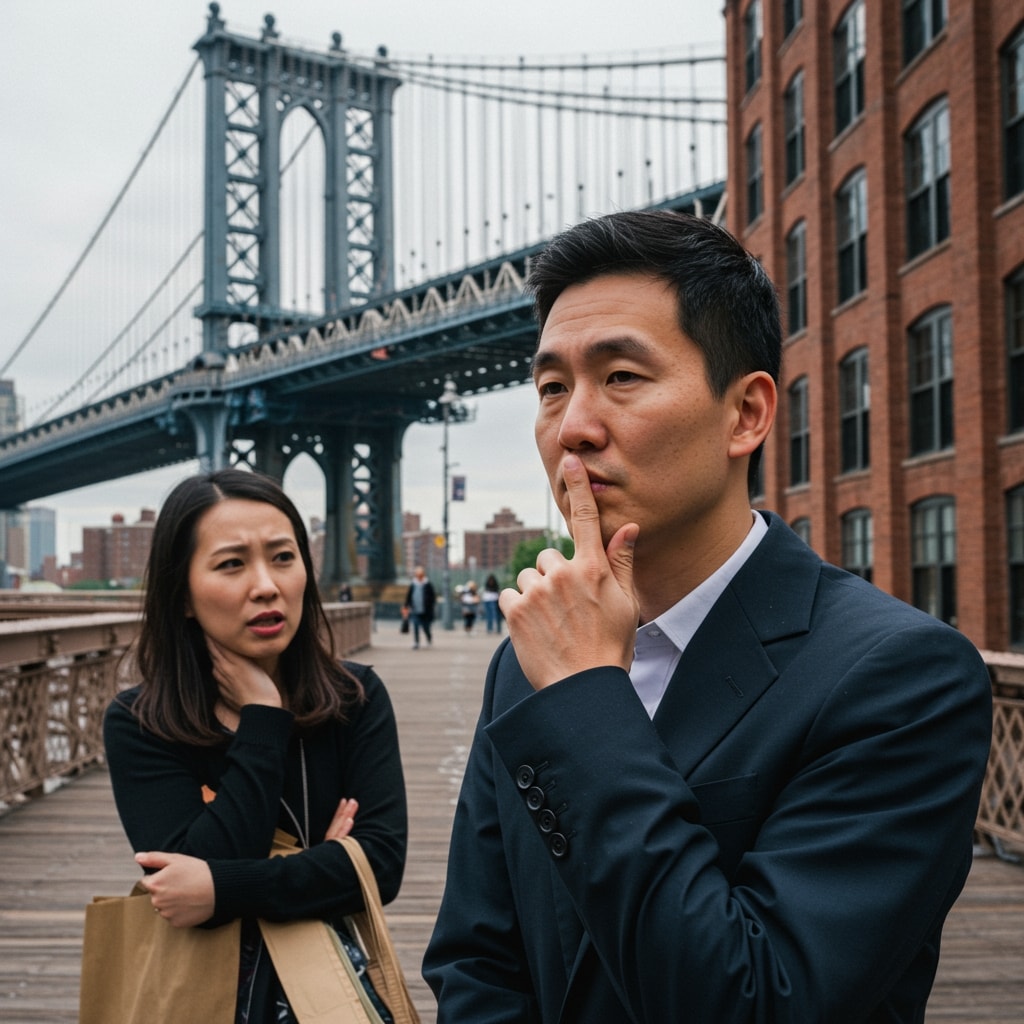
FAQ: Distancer Dynamics and Gottman Method Couples Therapy NYC
What makes the distancer role so destructive in intimate relationships?
In many intimate relationships, one partner acts as the distancer—shutting down, stonewalling, or withdrawing whenever tension or difficult feelings surface. This emotional distance, even when meant to keep the peace, is a major contributor to relationship breakdown. Both people feel the consequences: trust, emotional intimacy, and genuine connection start slipping away until each partner feels like they’re living parallel lives. According to research from John Gottman and Gottman Method Couples Therapy NYC, persistent stonewalling predicts divorce—and leaves both partners more alone. Emotional withdrawal may seem neutral, but it blocks affection, intimacy, and the deep emotional bonds that create fulfilling relationships.
What is the pursuer-distancer dynamic, and how does it affect emotional connection and communication?
The pursuer-distancer dynamic is extremely common in romantic relationships and personal relationships everywhere. One partner (the pursuer partner) actively seeks more closeness, reassurance, and connection, feeling anxious when emotional needs go unmet. Meanwhile, the distancer in relationships pulls away, seeking personal space or alone time—especially during conflict or stress. This classic pursuer distancer dance plays out in countless adult relationships. The more one partner pursues, the more the other retreats, creating a vicious cycle: frustration builds, emotional distance grows, and even simple requests can spark more distress. Over time, both the pursuer and distancer feel misunderstood, and intimacy fades. Healthy, balanced dynamics require both effective communication strategies and self awareness—so you can break the pursuer distancer cycle and create deeper connection.
How do attachment styles influence the pursuer-distancer cycle and relationship satisfaction?
Our individual attachment styles—secure, anxious, avoidant, and disorganized—set the tone for how we seek affection, space, and closeness in relationships. Women tend to be pursuer partners more often, but anyone can fall into these roles, guided by their unique attachment patterns. An anxious attachment or anxious attachment style (especially in the pursuer) leads to feeling anxious, craving more closeness, and pursuing connection. Distancers tend to lean into avoidant attachment styles, desiring autonomy and granting space. When an anxious attachment meets avoidant attachment, the pursuer distancer pattern gets stronger, feeding emotional distance and blocking emotional intimacy. Understanding your individual attachment styles—and building self awareness—helps you spot common patterns and move toward healthier patterns in life and marriage.
What are the signs of a distancer in relationships?
Spotting a distancer in relationships is easier when you know the signs:
- One partner consistently prefers alone time or personal space
- They avoid or shut down during difficult emotional conversations
- Stonewalling, going silent, or even leaving the room during conflict is typical
- Pursuer partners are often left feeling unheard and frustrated, desperately wanting more closeness and affection
These patterns—while extremely common—create emotional distance and erode the emotional bonds vital for a healthy relationship dynamic.
Why do pursuer-distancer cycles happen so frequently?
Most couples fall into the pursuer distancer cycle or pattern without realizing it. These dynamics are fueled by individual attachment styles—formed by early life and personal relationship experiences. When one partner feels emotional distance, they pursue for reassurance and connection; the distancer withdraws, craving space. As the cycle spins, both partners end up with unmet emotional needs, less intimacy, and more distress. Without intervention or effective communication strategies, even healthy relationships can get stuck in this vicious cycle.
Can understanding attachment styles and patterns help break the pursuer distancer cycle?
Absolutely. Most couples don’t realize how powerful self awareness and understanding can be. When you see your own role in the pursuer distancer dance, and recognize your individual attachment styles, everything shifts. Suddenly, emotional needs make sense. Practicing new, effective communication strategies and granting space intentionally creates a more balanced dynamic. Over time, this insight paves the way toward healthier patterns and truly fulfilling relationships.
Can integrative couples therapy really help distancers change?
Yes! Integrative couples therapy—blending the Gottman Method, Emotionally Focused Therapy (EFT), Schema Therapy, and the Loving at Your Best Plan—transforms even the toughest pursuer distancer patterns. Our expert NYC couples therapists use four evidence-based models to address each partner’s attachment style, foster emotional bonds, and teach practical communication tactics. This tailored process creates room for vulnerability, affection, autonomy, and connection—giving both partners what they truly need for a healthy relationship.
Why don’t distancers in relationships always recognize the damage their withdrawal causes?
Distancers tend to believe that granting space and seeking alone time reduces conflict. However, to the pursuer partner, this often feels like rejection or abandonment, ramping up the pursuer distancer cycle and causing more distress. Over time, emotional distance becomes the default response, even as both partners desire more closeness and security. Bridging this gap requires direct awareness and an openness to new ways of connecting.
What should you do if you spot the pursuer distancer pattern in your romantic relationship?
Start by recognizing these cycles as common patterns. Blame gets you nowhere—what matters is creating healthier patterns built on understanding, intentional communication, and compassion. Working with experienced couples therapists who specialize in integrative approaches ensures you and your partner get personalized tools to nourish emotional intimacy, grant space when needed, and build lasting emotional bonds. A truly fulfilling relationship is possible.
How do I get started?
Don’t wait for your relationship dynamic to get more complicated. Schedule your free consultation today with a Loving at Your Best marriage therapist or couples counselor in NYC. You’ll get expert support for unraveling even the most stubborn pursuer distancer dynamic—with a toolkit spanning four trusted therapy models. Your path toward intimacy, connection, and a deeply healthy relationship begins with one courageous first step.



















